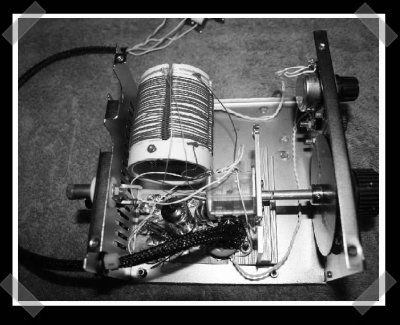
[H.P. Friedrichs] sent in his Sanfordyne project a while back, but It took me a while to appreciate the effort he put in. (Partly because the write up is so long – but thorough) Grab some of your favorite caffeine supplement and take your time reading over the details. Most of the parts were scavenged, and he mechanically etched the pc board with a dremel tool.
6 thoughts on “Sanfordyne – Scavenged AM Tube Radio”
Leave a Reply
Please be kind and respectful to help make the comments section excellent. (Comment Policy)















I’m surely not well versed in this kind of technology, but this goes way beyond a hack and is quite simply a work of art. Thanks for the good read.
I also enjoyed this link. I’m taking an Electronics Engineering course at a Canadian College at the moment, and just finished up a Radio Communications course in the September semester and this contrasts a lot of what was learned quite nicely.
By the end of the course, you end up reading about so many advanced techniques and improvements that it seems almost unbelievable that you can make a functioning radio almost entirely through trail and error.
And for the anglophiles amongst us they may be aware that Sanford and Son was the U.S. version of the British classic Steptoe and Son. http://en.wikipedia.org/wiki/Steptoe_and_Son
Rather artfully ghetto I suppose, but pretty much every HAM radio enthusiast over the age of 40 has done something similar.
Still, though, it’s nice to see that the old “cuz I can” school of electronics design is alive and well.
sinerasis, i agree 100%! The dial-in-the-fan-vent bit is particularly brilliant :)
I enjoyed seeing this. Back in the early 70s I was in junior high and into radios. I built several of these, each one more advanced than the previous but all out of junk parts. My last and best was a super regen. It’s enclosure was an old paint thinner can and the tube number I can’t remember (maybe 6SN7)but was two tubes in a single glass enclosure. The second tube gave me audio amplification. It was multi-band by having plug-in coils of different sizes. These coils were wound on old octal tube sockets and plugged into the back. I think the radio is in my parents attic. When I visit them this summer I will try to find that radio and play with it. Thanks for bringing back a memory.